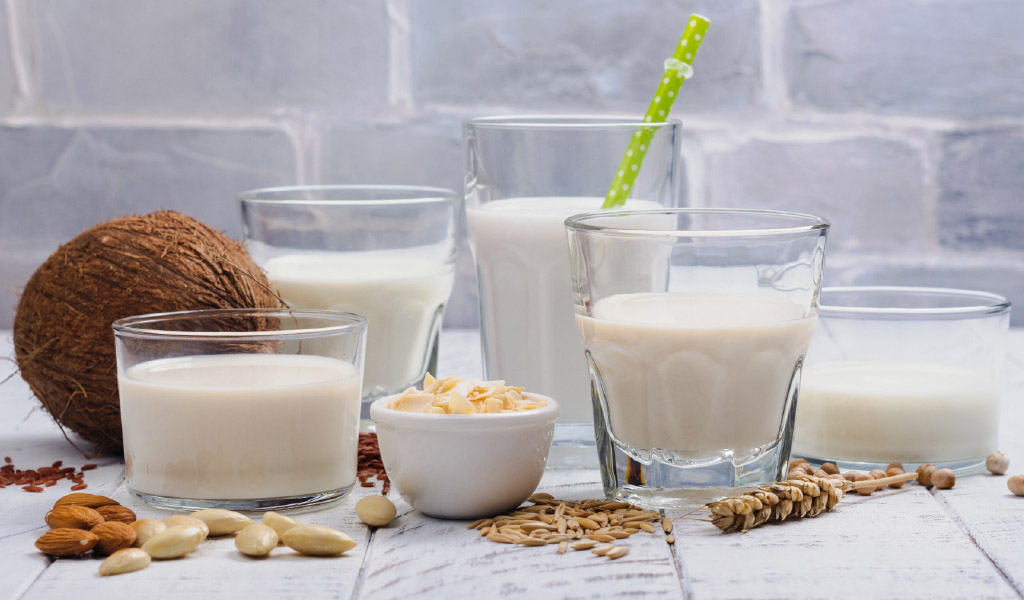
Milking It… Dairy-Free
Made of nuts or seeds or even pea protein, dairy-free milk alternatives are widely available in the store, giving you choices for smoothies, recipes or drinking straight from a glass. Of course, non-dairy alternatives are great for people who eat a vegan diet or have a dairy allergy or sensitivity. With so many flavors and textures – plus nutrition benefits – they are also worth trying to change up your cooking, coffee or cereal. Unsweetened versions are generally lower in natural sugars and calories than dairy milk. Find these alternatives in the dairy aisle, as well as in shelf-stable boxes in the grocery aisle, for easy travel and storage. Here is a guide to some popular non-dairy milks to try and suggestions on how to use them:
Almond Milk
With a creamy texture and nutty flavor, almond milk is great for use in cooking and baking, as well as in coffee or cereal. Check out our D.I.Y. Almond Milk guide on page 85 to make it yourself using a blender with almonds and water. High in vitamin E and fortified with other key nutrients, unsweetened almond milk is typically lower in calories than dairy milk. Blend it into savory dishes, such as mashed cauliflower or soup. Add a sweetened, vanilla-flavored version to chocolate cake, or use the Califia Farms Coconut Almond Milk for a rich chocolate sauce to drizzle over fruit.
Pea Protein Milk
Rich and creamy, pea protein milk is made with dried yellow peas. This plant-based milk has 50 percent more calcium than dairy milk and half the sugar. It is made by blending peas with other plant-based oils: sunflower oil, for a rich texture, and algal oil, which contains DHA omega-3 fatty acids. Try using it to make a creamy sauce for pasta or cheese sauce for veggies or fries.
Coconut Milk
Coconut milk is made by grating the flesh of a coconut and soaking it in hot water. After skimming off the coconut cream that rises to the top, the liquid that remains – the coconut milk – is squeezed through a cheesecloth. Coconut milk is higher in good fats and rich in B vitamins and minerals. You can find lower-fat, “lite” varieties for your recipes that are great for curries and soups. For coconut milk whipped cream, take a can of the full-fat version and put it in the refrigerator. Then whip the solidified cream at the top!
Hemp Milk
Hemp milk comes from the Cannabis sativa plant, but doesn’t contain the “drug” part of the plant. The milk is made by soaking and grinding hemp seeds in water, resulting in a milk that’s a bit thicker than skim milk, with flavors of beans and nuts. Sold in shelf-stable boxes, hemp milk is rich in omega-3s and fortified with vitamins and minerals, such as vitamins A and D. Use hemp milk in your coffee or cereal, or for baking.
Rice Milk
Thinner in consistency than most dairy-free milks, rice milk has a milder, sweeter flavor than most nut or seed milks. Most rice milks are fortified with calcium, as well as vitamins and minerals. It’s a good substitute for low-fat baking, such as in pancakes or muffins. However, it’s not creamy enough on its own to use in most sauces.
